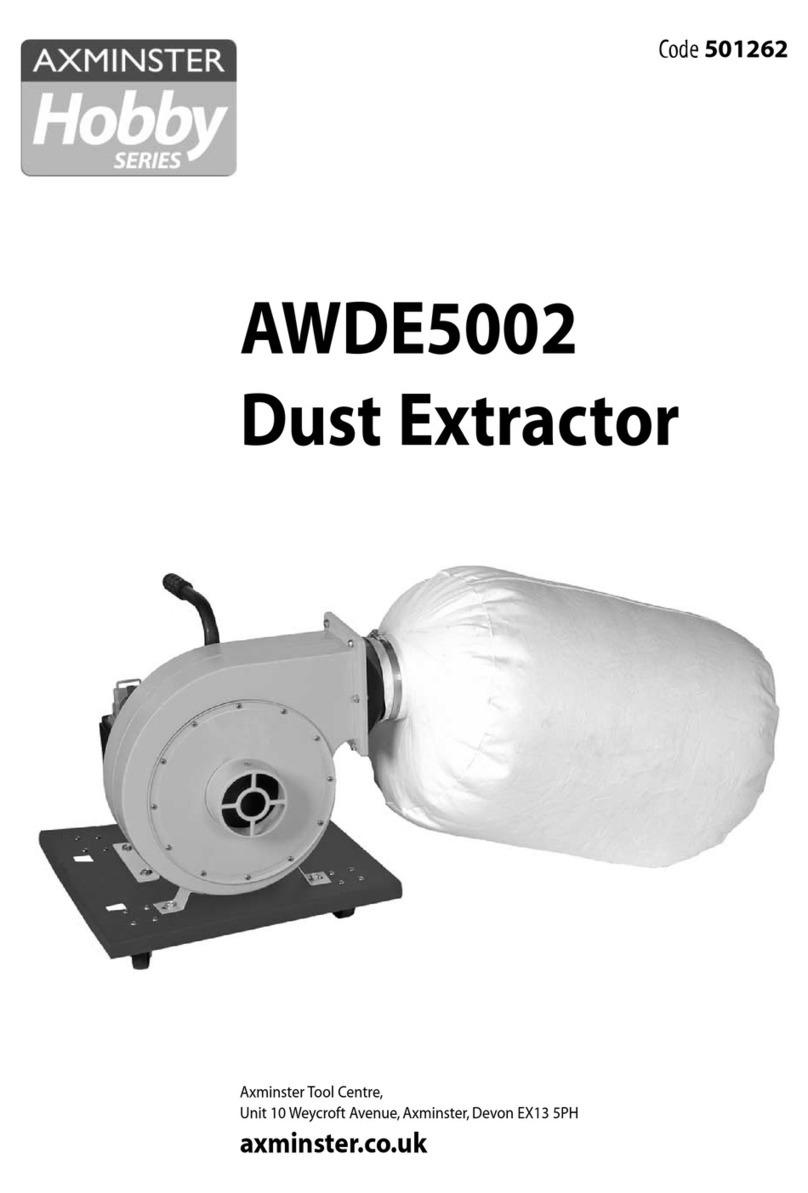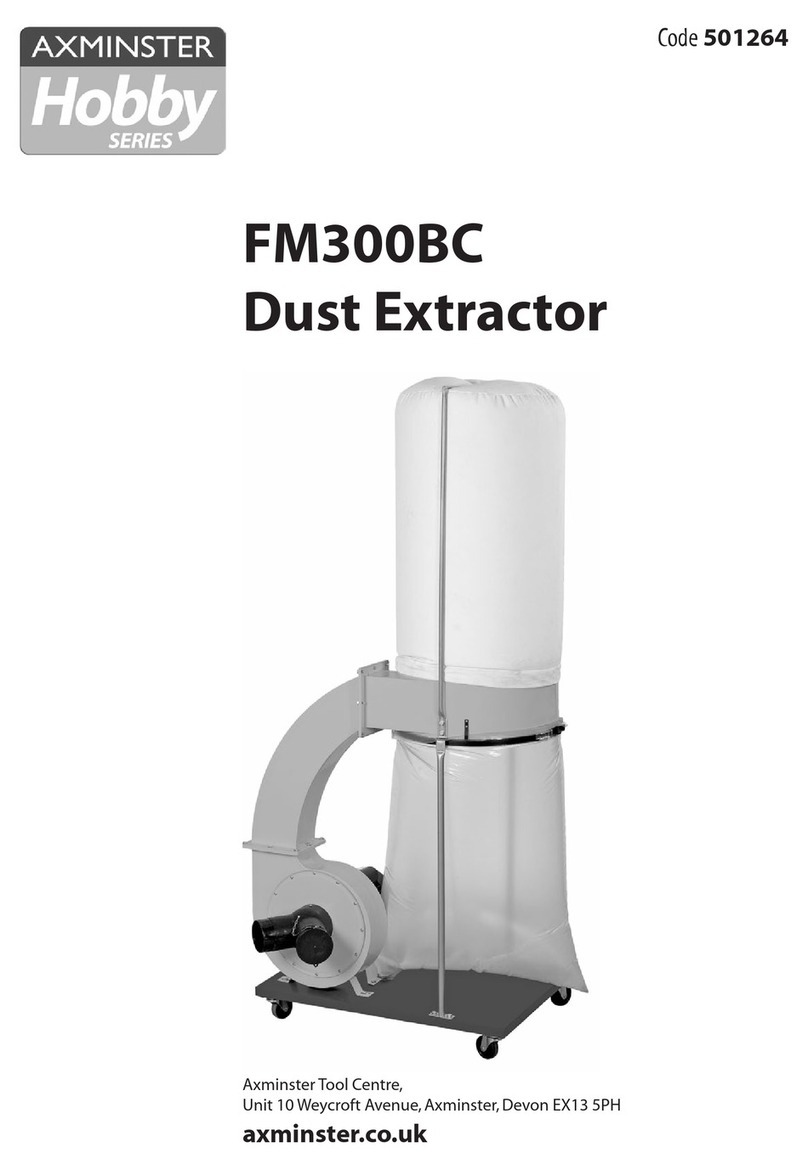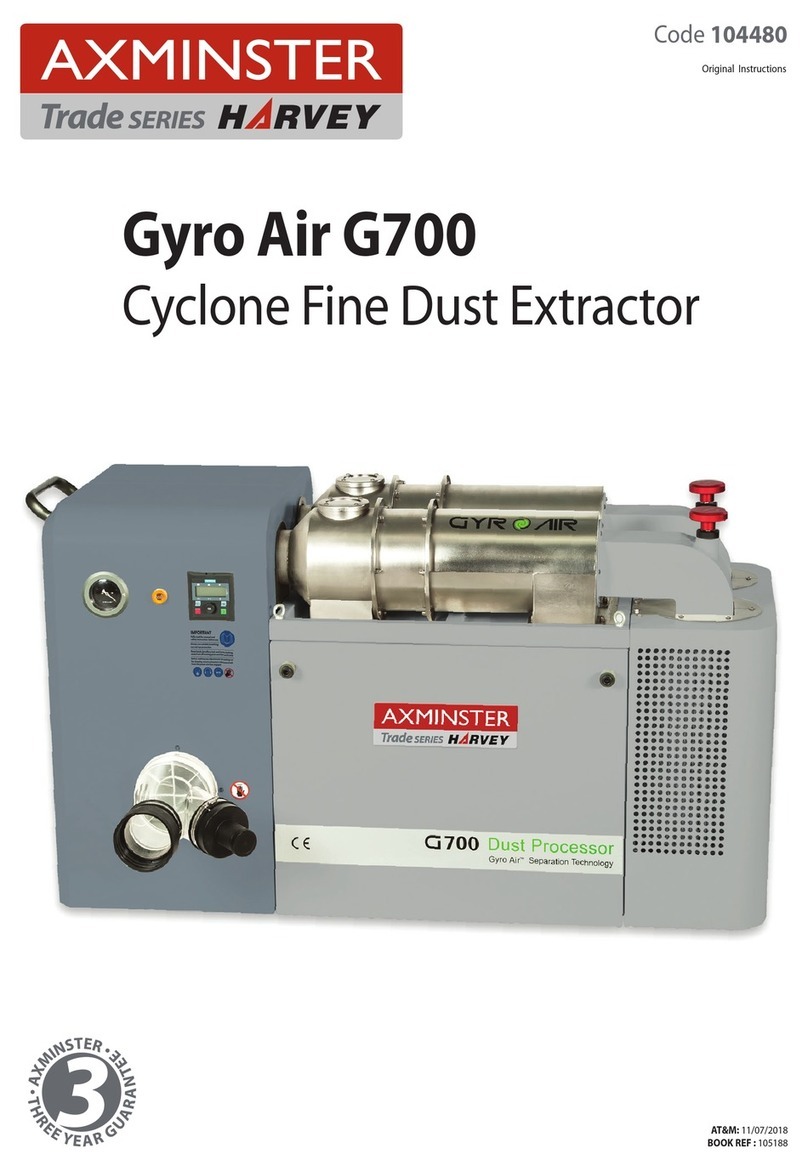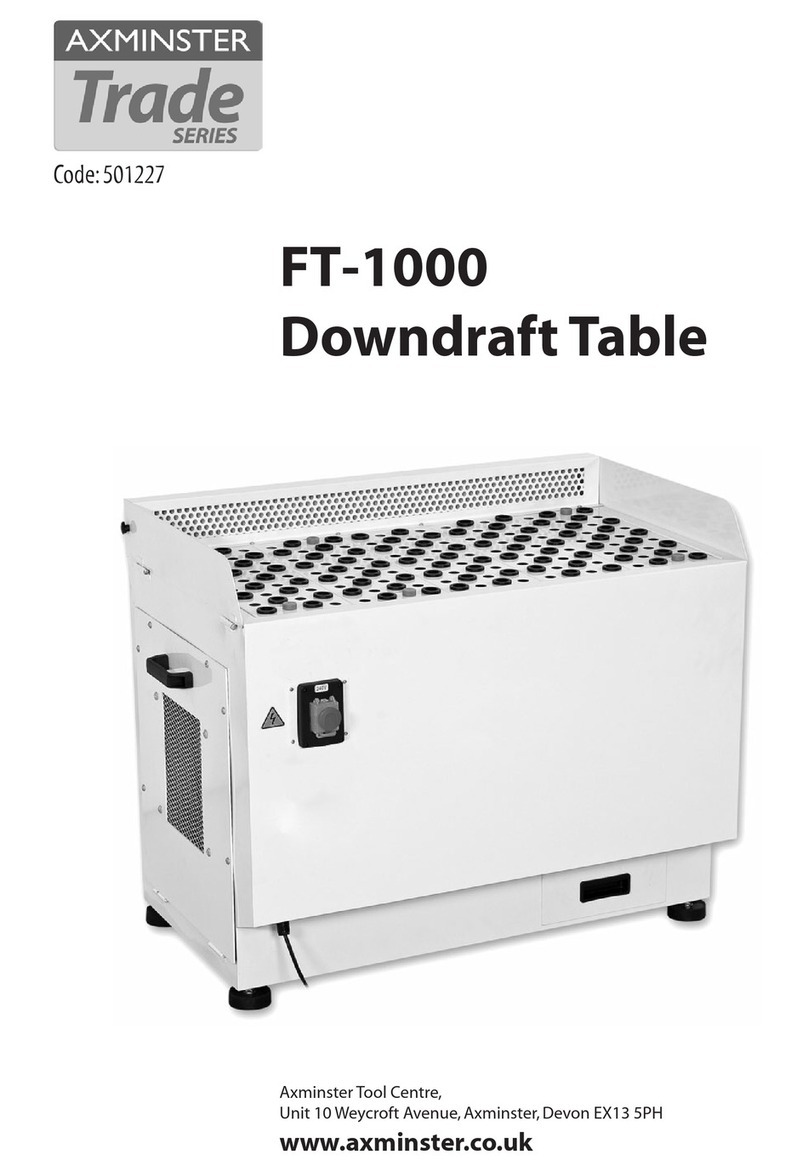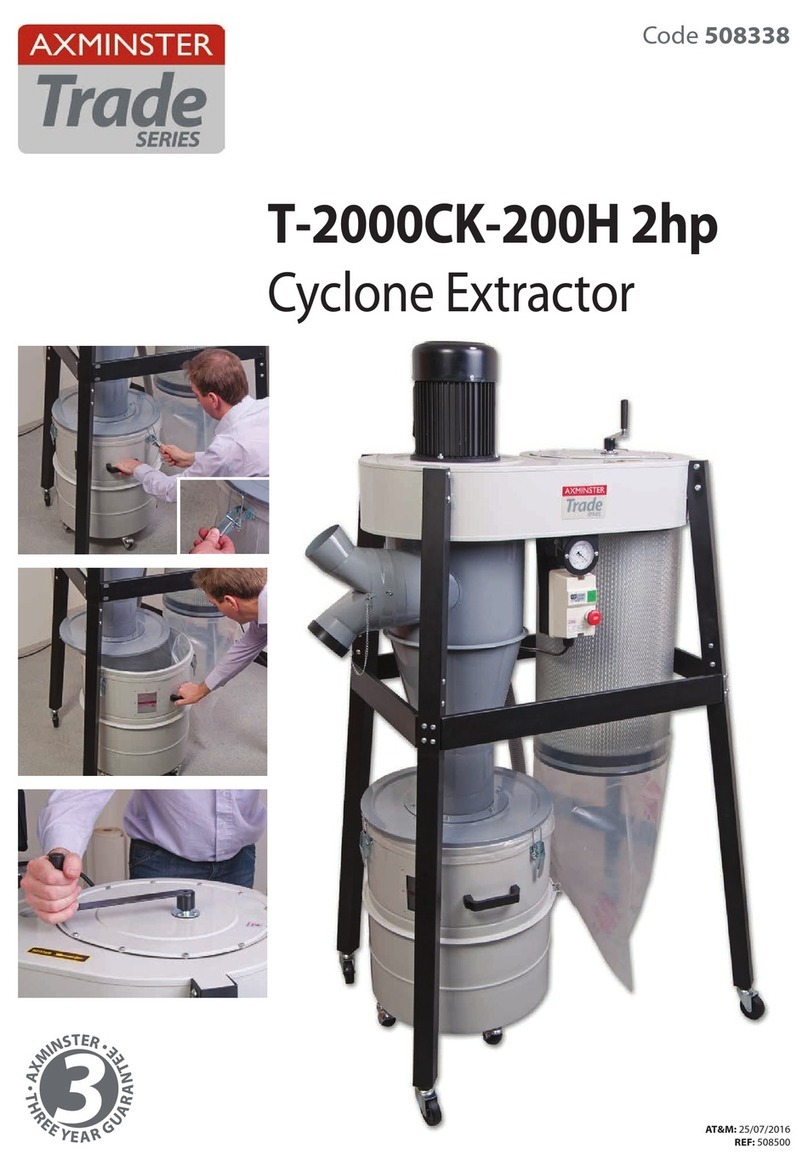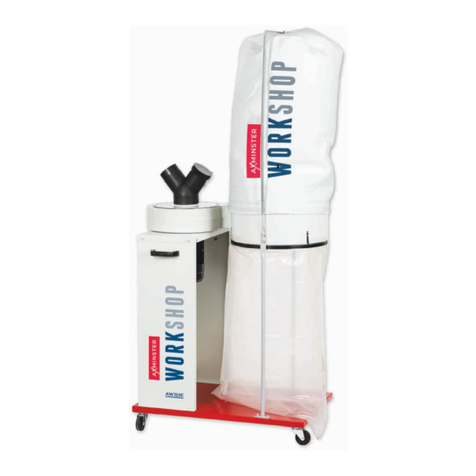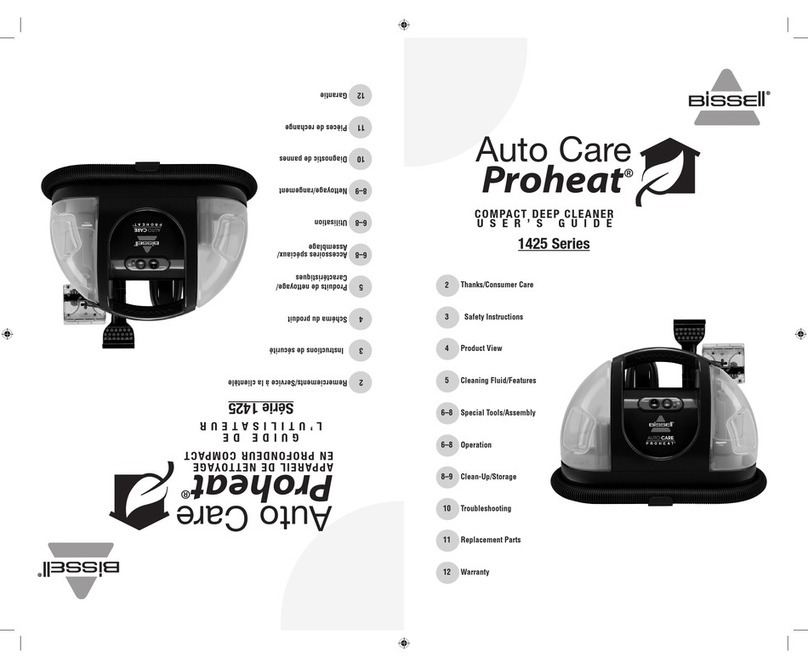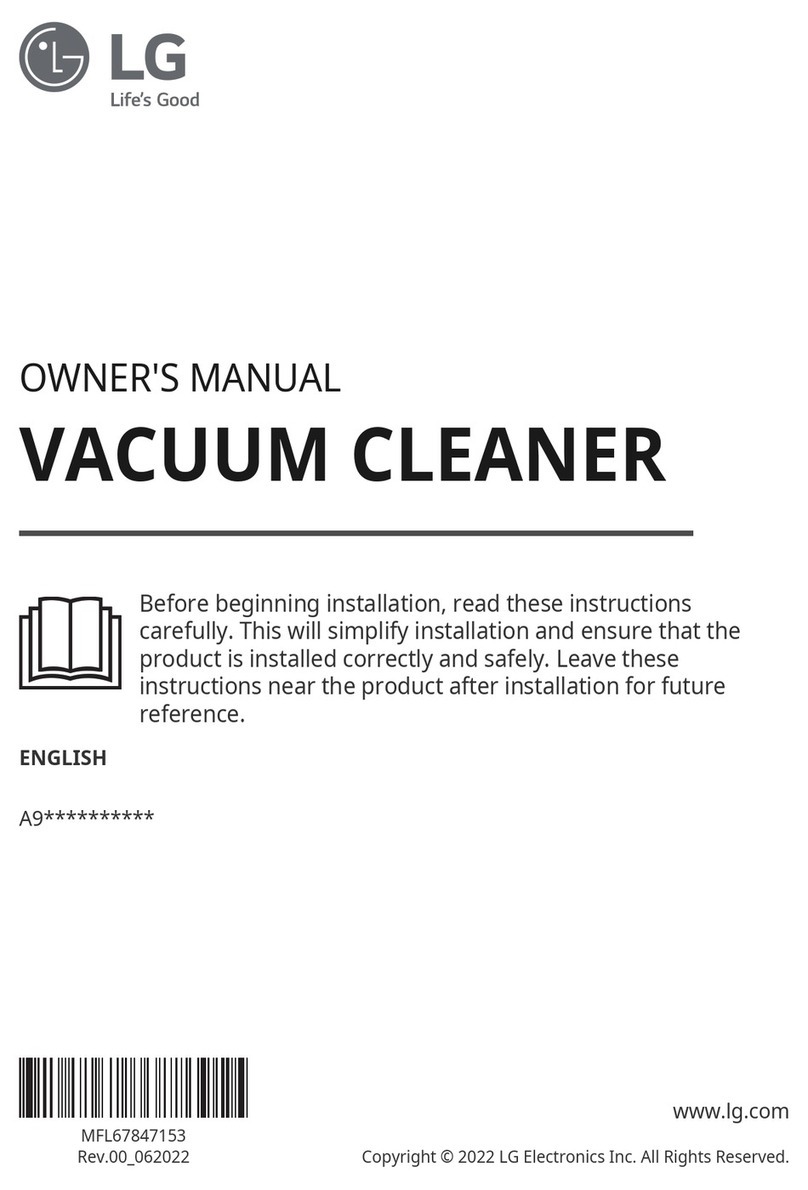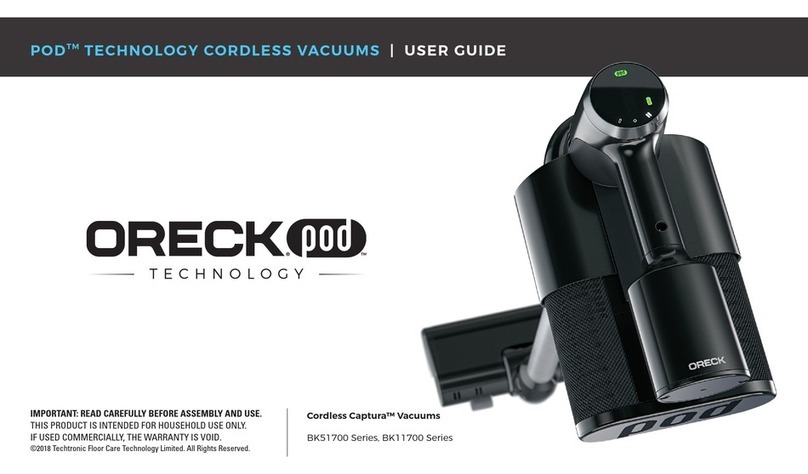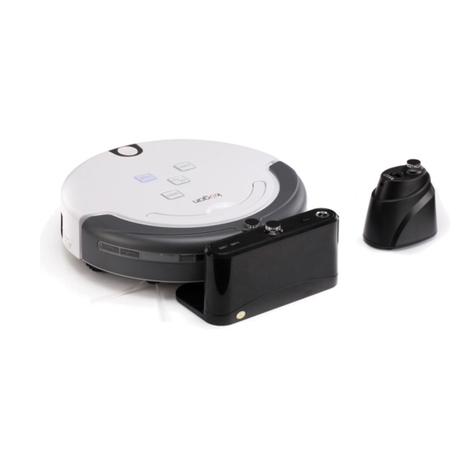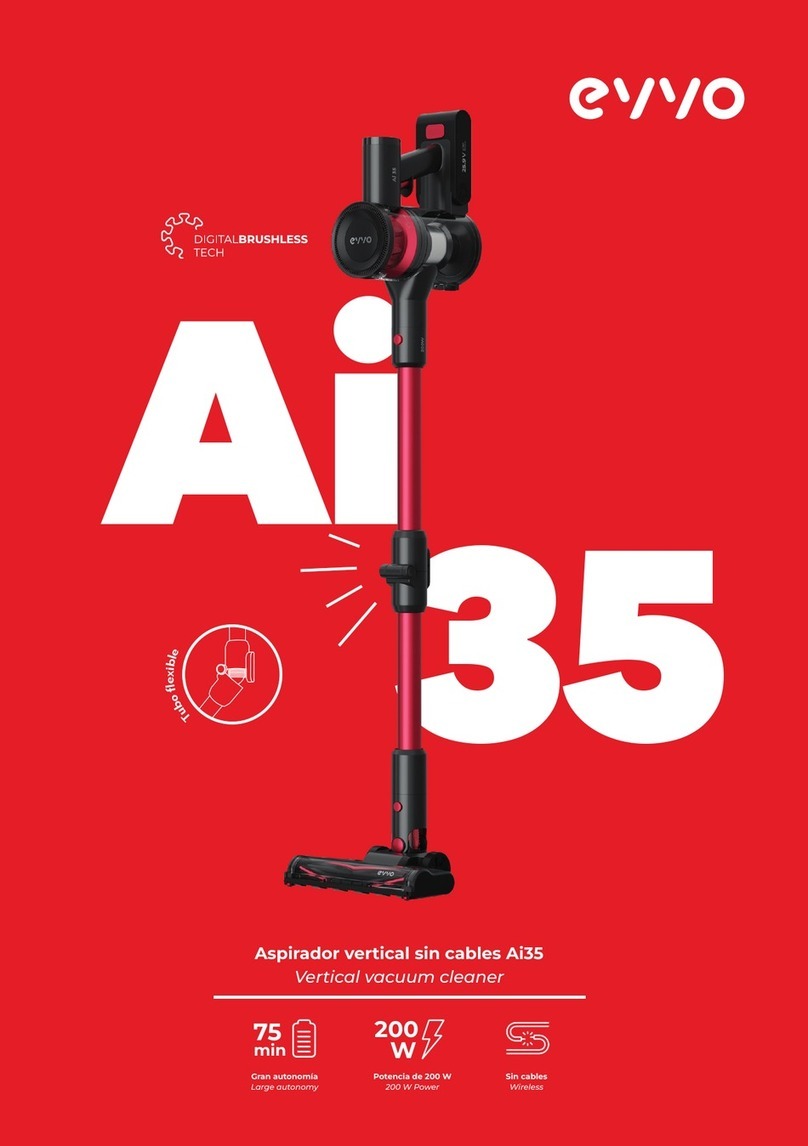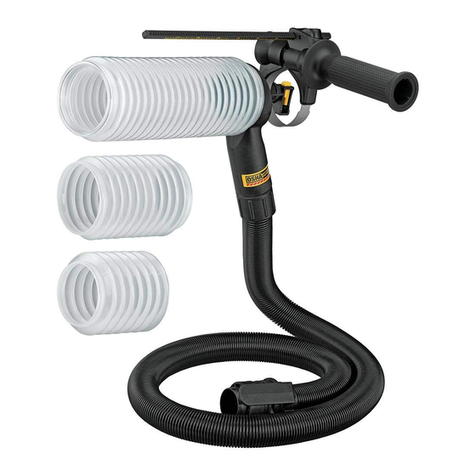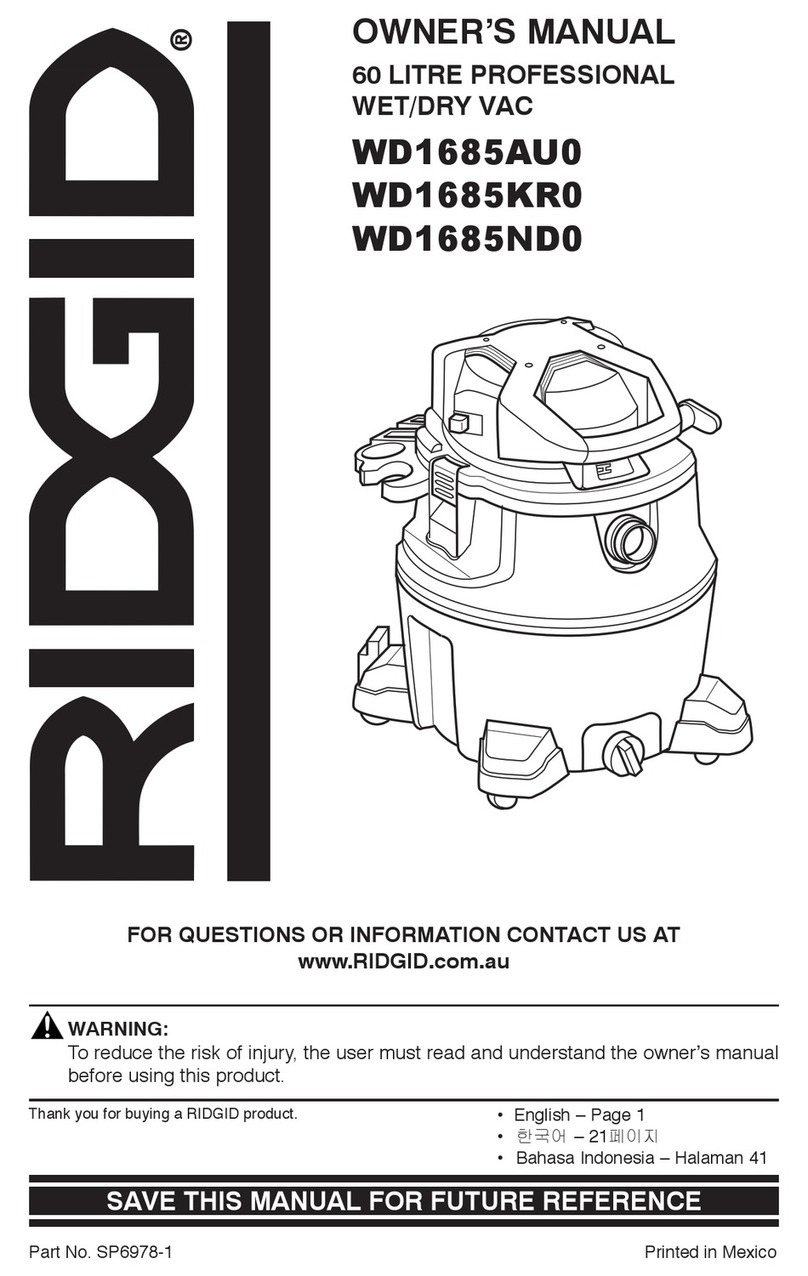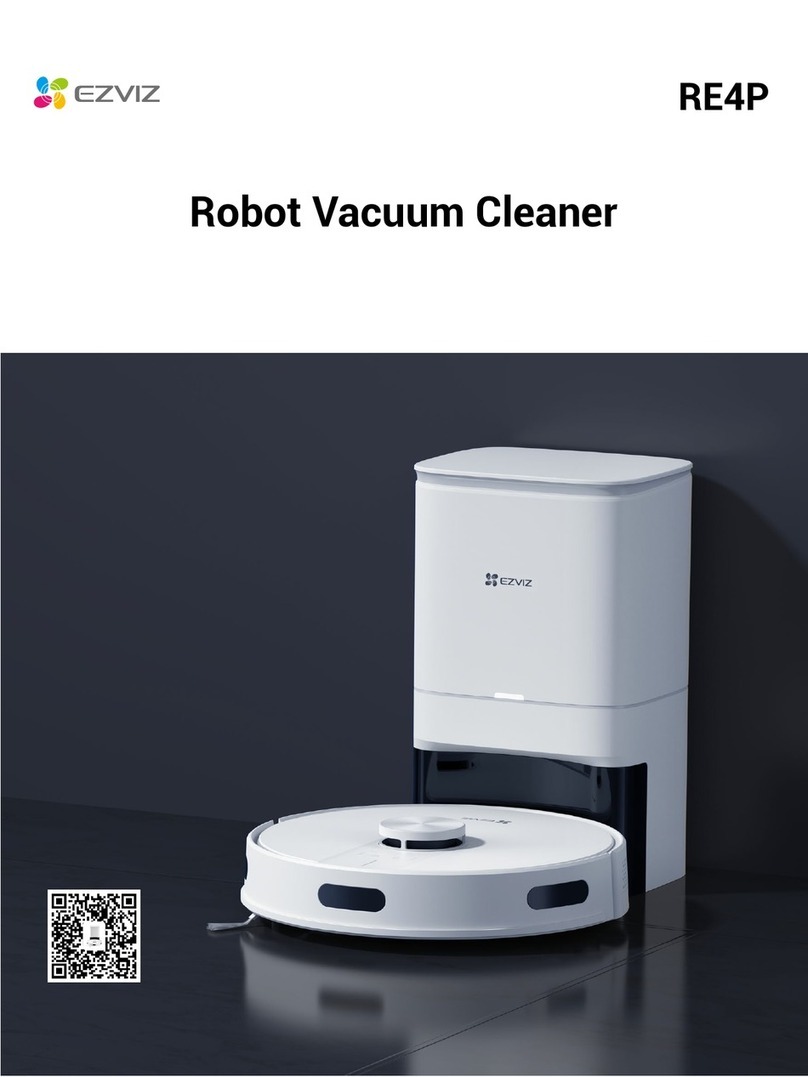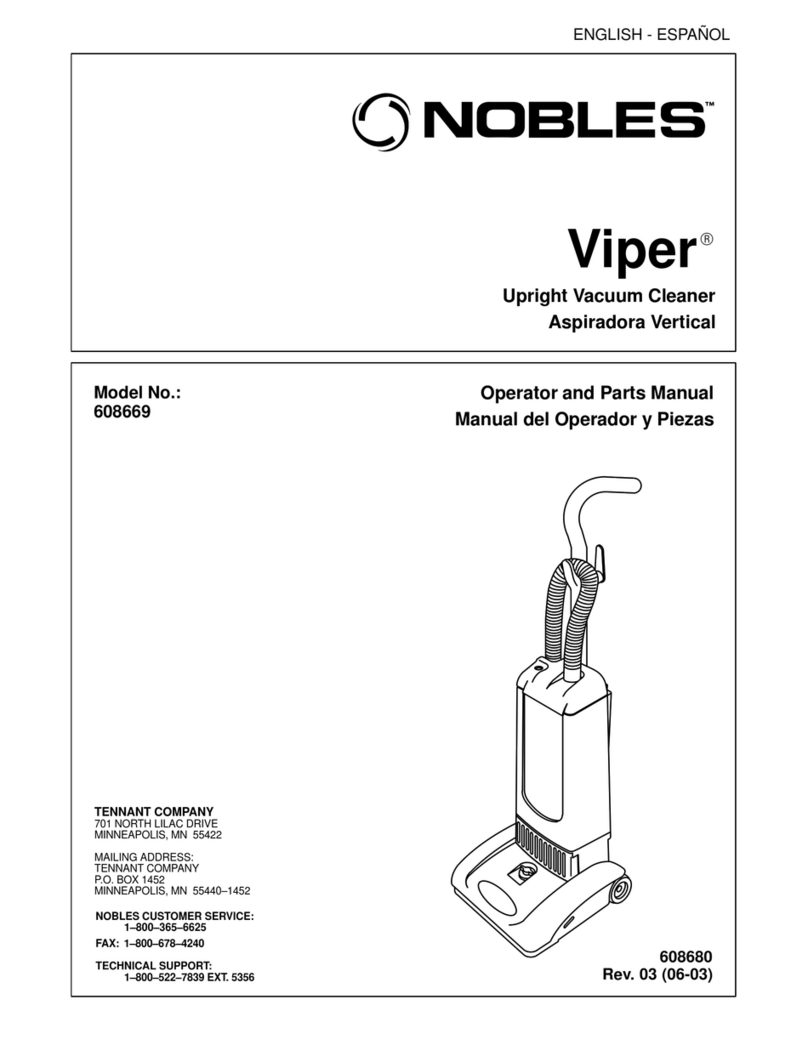
Specific Safety for Dust Extractors
7
DO NOT use this machine as a vacuum cleaner, try to keep the
waste medium to wood by-products.
DO NOT uplift workshop floor debris (stones, nails, screws, paper
etc., etc). Be aware that wood dust is an explosive medium.
DO NOT allow any ‘naked light’ source to occur anywhere near
the machine.This includes cigarettes, matches, etc, and do not
place the machine near any unprotected light bulbs, that could
possibly get broken.
The suction force is generated by a high speed fan unit.This
has the potential to amputate fingers, grab loose clothing (ties
etc.,) and‘bat’ large chips etc, at high speeds. Keep all guarding
in place, and if access to the fan becomes necessary (due to
blockage etc.,) Disconnect the machine from the mains supply
and ensure the fan has come to a complete stop before putting
your hands anywhere near to it.
If you are not using ‘clear’ extraction hose, periodically
remove the hose to check that the inlet to the machine is not
getting restricted. (The safety guard grill of the inlet duct can be
particularly irksome in this way, as long strand shavings etc., can
wrap around the grill fret.)
KEEP the particle filter clean.The machine relies on its ability
to ‘blow’ air through the filter, to generate good suction. If the
particle filter starts to clog, this reduces the air flow and hence
the machine becomes less efficient.
The particle filter can be cleaned, by using an ‘M’ class vacuum
cleaner, clean the inside of the filter.
BE AWARE that in dry air periods or areas, the movement of
the air through the machine can generate static electric fields.
These are not normally a problem as the machine is bonded
together via its construction and the whole is earthed back
through the electrical supply; problems can occur with isolated
items, such as stands or hosing that are insulated from the
ground (standing on rubber feet?, suspended in the air etc).
If possible, try to connect everything together electrically, to
eliminate static shocks.
(Use the integral metal coil in flexible hosing to connect the
units together).
Try to route the power cable and the hosing away from busy
walkways.
ONLY USE DUST EXTRACTION BAGS
WITH THIS MACHINE NOT DOMESTIC
WASTE BAGS!
DO NOT PLACE DUST EXTRACTION
BAGS OVER THE FILTER ASSEMBLY!
Code 102179
Model AT340E
Rating Trade
Power 2.2kW 230V 1ph
Air Flow 3,000m³/hr @ 200mm, 1,600m³/hr @ 150mm
Noise Level 75dB @ 3M
Particle Size 1micron @ 100% Efficiency
Hose Diameter 1 x 200mm or 2 x 150mm
Bag Capacity 170 litre x 2
Overall L x W x H 1,650 x 530 x 1,760mm
Weight 92kg
Specification
